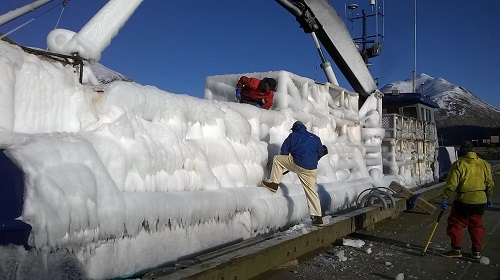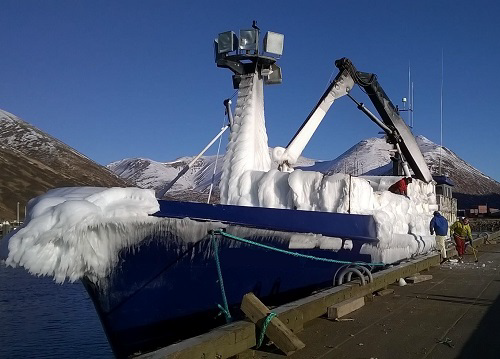USCG: Remain Upright by Fully Understanding Vessel Stability
The need for operators to understand their vessel’s Stability Instructions (SI) cannot be overstated. It is important to understand the document. Operators and crew should seek out opportunities to further their knowledge of stability via courses, training, workshops, and visits from Naval Architects. They should also take advantage of other various initiatives, both mandatory and voluntary, to discuss and compare a vessel’s current SI to the actual loaded condition prior to departing port. An independent review of a vessel’s loaded condition, equipment, and operations can often provide important insights.
- Routinely review and update vessel SI,
- Stay below the limits for vessel and cargo detailed in SI,
- Ensure SI reflect the vessel's current arrangement, equipment, and operations (lightship and loaded cargo/fishing gear conditions), and
- Follow good marine practice by re-assessing the SI every five years.
- Major conversions or substantial alterations (See 46 CFR 28.50 and 28.501, respectively),
- Changes to a vessel’s rigging, deck, or fishing equipment (including pots),
- Changes in principal dimensions, cargo hold, or tank capacities,
- Circumstances of weight creep (i.e., the accumulation of extra gear, equipment, and parts carried aboard the vessel), and
- Any other weight change variations which may occur.
- Pay special attention to pot weights,
- Annually weigh a percentage of them to verify if the actual weight (including shots of line and buoys) matches that recorded in the SI,
- Weigh them wet - soaked lines can add as much as 15 pounds per shot, and
- Consult a Naval Architect for loading recommendations and amendments if pots are heavier than what is listed in the SI.
- Regulations for SI assume only 1.3 inches of accumulation on horizontal surfaces;
- Real life conditions easily and often exceed 1.3 inches of icing;
- Unless tested for a value over 1.3 inches a vessel’s capsizing and sinking risk increases when that value is exceeded on horizontal surfaces;
- A vessel’s center of gravity can rapidly rise when freezing spray accumulates high above the main deck;
- Operators should use all available resources to determine if icing and freezing spray is forecasted in their operational location for the next 48-72 hour time window;
- If icing conditions are forecasted or present – operators should seek shelter, reduce speed, change course, and manually remove ice;
- If forecasted prior departure, operators should consider reducing the amount of bait, gear, and pots.
- Follow SI associated with watertight doors (WTDs) and hatches,
- Frequently train and inform crew to habitually close watertight doors and hatches at sea,
- Label WTDs to be closed,
- Keep hatches closed to the greatest extent possible, and
- Practice closing WTDs that are routinely permitted to be open during emergency drills.















